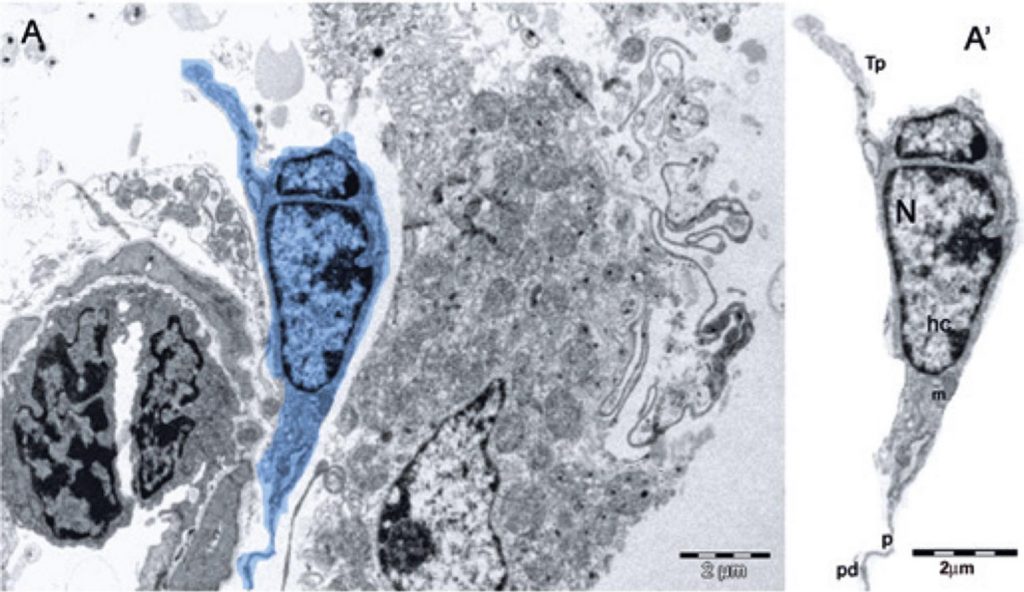einstein (São Paulo). 22/Jan/2021;19:eAI5737.
Identification of telocytes in dystrophic mice testis
DOI: 10.31744/einstein_journal/2021AI5737
Telocyte (Tc) is a new type of classic interstitial cells, described by Popescu et al., ( ) in the human pancreas. Telocytes are found in several organs, including the human testis. ( ) They are long, thin cells ( ), with small cell bodies, a nucleus containing heterochromatin and presence of mitochondria in the periphery, in addition to a scarcely evident nucleolus. ( – ) They differ from other interstitial cells by their long moniliform cytoplasmic extensions, called telopodes (Tp) ( ), and are usually identified through their ultrastructure by transmission electron microscopy (TEM). ( – ) The long cytoplasmic projections, Tp, comprise thin segments (podomeres) and dilated regions (podoms), containing secretory vesicles and mitochondria ( , ) ( ). Telocytes are located in the peritubular region of the testis and contact myoid cells through cell junctions, while also contacting blood vessels and androgen-producing interstitial cells (Leydig cells) through Tp. ( , , , ) Therefore, it is believed that Tc establish homo- and heterocellular junctions, vesicle release and paracrine and/or autocrine signaling. They also interact and communicate with Leydig myoid cells and blood vessels through Tp, being responsible for the transport of substances between the interstitium () and the seminiferous tubule, such as testosterone, which is essential for spermatogenesis. ( – )
[…]
422

